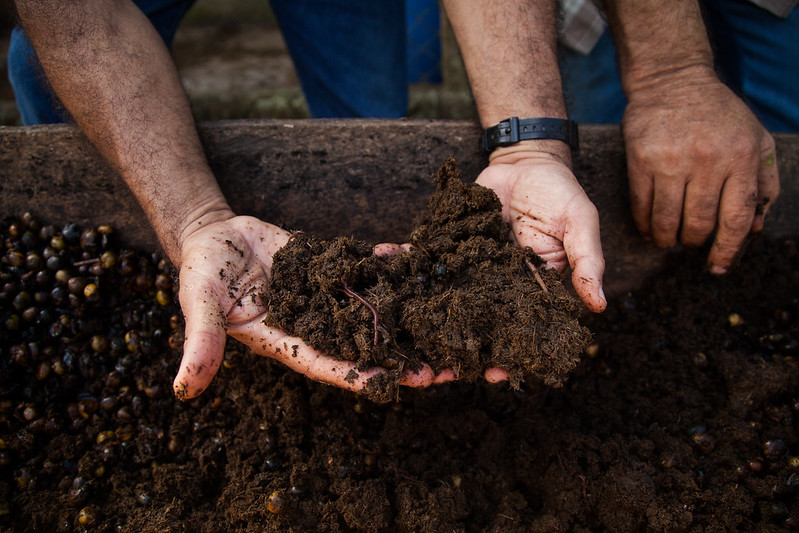Written by Brad Dixon
Once we all understand that we have a connection with each other, the natural world, and share a calling to care for our planet, maybe we can start to come together with collaborative conversation rather than throwing barbs and rocks from our entrenched glasshouses.
Over the last 150 years, we have deforested almost 50% of all trees on the planet to make way for crops and grazing for livestock. This has contributed to the degradation of 50% of the world’s topsoil. Healthy soil is the living ecosystem (over 9 billion microorganisms per teaspoon of soil) that literally sustains us. Soil is a non-renewable resource on which 95% of the earth’s food supply depends. Healthy soil is integral for biodiversity and food security. Soil also plays a vital role in mitigating the effects of climate change. If we continue to farm the way we have been for the last 60 years, then we will only have approximately 60 more arable growing seasons left on planet earth – if the soil goes, we go.
Sustainable regenerative methods of farming are better than conventional methods. These are proven methods to provide better nutrient-dense food, sequester carbon, and rebuild the planet’s faltering biodiversity. Regenerative farming biologically mimics the planet’s ecosystem and is far less harmful than industrial monoculture (crop, plant, or livestock) – these intensive methods are set up to create high volume, cheap food with little regard to the nutrient density of the product and the overall health of the soil.
After World War 2, there was a surplus of petroleum which triggered an onslaught of pesticide and herbicide production and the myth that we needed these products to grow food. This may be true for mass mono-crops that require huge inputs at the expense of making use of the natural world to do it’s intended job. But when you have excessive “extracting” with farming methods, then the system robs the soil of its regenerative potential – literally slowly killing the golden goose that provides the gold.
Animals can be used with regenerative methods with far less intensiveness and more sensitivity than what we currently see. Although the animals in these farming systems will have improved quality of life (compared to intensified factory farming methods), I personally choose not to participate in this process for the purpose of food as it’s not necessary in most parts of the world. However, nothing is black and white, so I don’t judge anyone that still eats animals, or farms animals. If you do choose to eat animals, then consider making a choice that supports more regenerative, caring, bio-diverse farming methods. We all need to work together to produce food in ways that improve our holistic wellness, which includes the health of the planet, and the ability of the soil and ocean to thrive rather than steadily degrade.
No one is totally divorced from causing harm. Even a complete vegan diet still creates harm. Conventional farming with the mono-cropping of fruit, vegetables, and grains still contributes to the harm of animals (rodents and insects will get killed with harvesting), and can still contribute to soil depletion and pollution of the water table with chemical pesticides. Just because there is harm involved doesn’t mean we shouldn’t strive to create the least harm possible.
A central pillar of veganism is compassion – not just for every sentient animal but every human being. Some extreme vegans swing too far in compassionate action towards animals at the expense of having empathy for their fellow human being. Attacking farmers and calling them “murderers” does not help build bridges between different ways of thinking, which would allow us all to move forward together. In fact, I would suggest that this approach just creates more division. Guilt and shame are poor change agents for behaviour. We need to connect more deeply with each other, our animal friends (here with us, not for us), and the Earth for the sake of the planet. As the ancient African proverb states, “You can travel far alone, but further together.”
If you are comfortable taking it further, then we can say that it’s also about connecting with the life force that connects everything. That force has been given many different names and forms depending on the culture and the time you have been raised in. That beautiful loving force has been there since the beginning, is with us now, and will be with us in the future. All form and matter on Earth including us is from and contains this wondrous energy. I call this stream of consciousness God, but I’m sure that the particular label and human framework used doesn’t alter this powerful loving force.
None of us has the complete solution–the conversation on how to save us and our planet does not belong to one religion, or one ideology, or one group of people – we must ALL come together and work to be better and move towards compassionate living and farming methods that align with EARTH CARE. We must be expansive with WELLNESS. Sustainability has to become more than a buzz word; it has to become an authentic part of all action we take.


